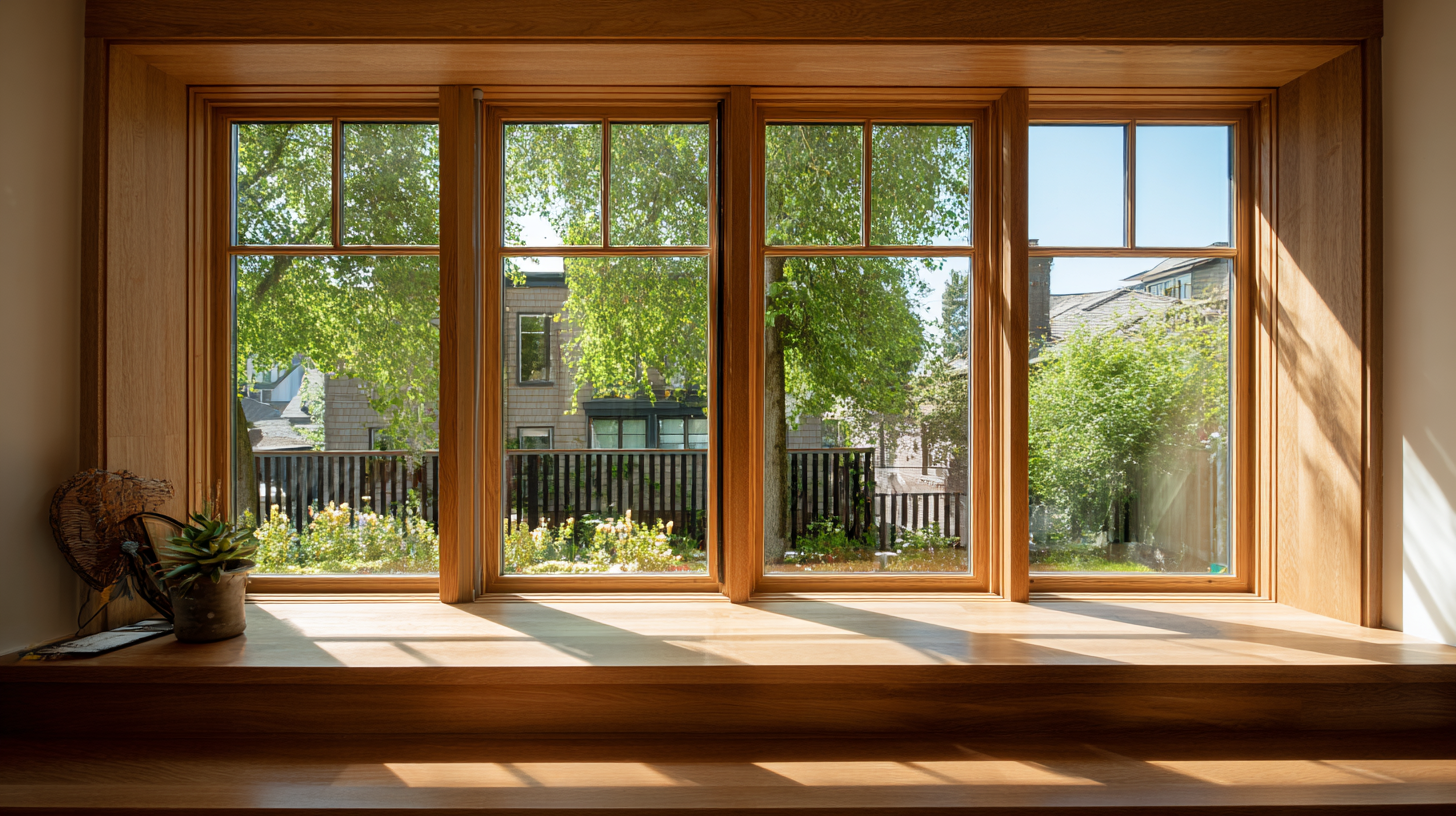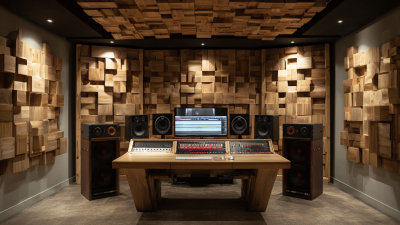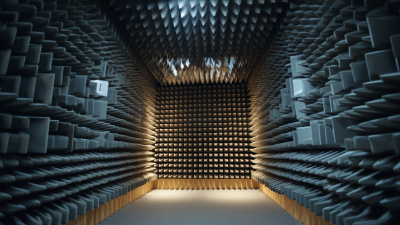Blog
The Ultimate Guide to Choosing the Right Acoustic Windows for Your Home
In today's increasingly noisy world, the importance of sound insulation in residential spaces cannot be overstated. Acoustic windows have become a vital solution for homeowners looking to enhance their living environments by minimizing external noise. According to the National Institute of Building Sciences, proper sound insulation can contribute to improved health and well-being, with studies showing that excessive noise can lead to sleep disturbances and increased stress levels. The demand for acoustic windows has surged, with the market projected to grow at a CAGR of 5.3% from 2021 to 2028, as reported by a leading industry analysis firm. This guide will explore the various types of acoustic windows available, their benefits, and how to choose the right option to effectively reduce noise while complementing your home’s aesthetic design. Whether you live near a busy street, an airport, or simply want to create a peaceful retreat, understanding acoustic windows is essential for making an informed decision.

Understanding Acoustic Windows: Key Features and Benefits
Acoustic windows are specially designed to reduce noise pollution from outside, making them an excellent choice for homeowners seeking peace and tranquility. One of the key features of acoustic windows is their multi-layer construction, which often includes laminated glass. This design not only blocks sound waves effectively but also enhances energy efficiency by providing better insulation. The use of thicker glass and airspace between panes further contributes to their sound-dampening capabilities, making these windows ideal for homes located in busy urban environments or near highways.
In addition to their soundproofing benefits, acoustic windows come with an array of advantages that can improve a home's overall comfort and value. They minimize unwanted noise, which can lead to a more serene living space and improved mental well-being. Furthermore, many acoustic windows are also energy-efficient, reducing heating and cooling costs over time. By investing in these windows, homeowners not only safeguard their peace but also enhance the property’s marketability, making it a wise long-term investment.
Types of Acoustic Windows: Which One is Right for Your Home?
When it comes to choosing acoustic windows, understanding the different types available is crucial for enhancing your home’s sound insulation. The three primary types of acoustic windows are laminated glass, double or triple glazing, and window inserts. Laminated glass features an additional layer of polyvinyl butyral (PVB) between two glass panes, significantly reducing noise. Double or triple-glazed windows provide excellent insulation by trapping air or gas between the panes, diminishing sound transmission further. Window inserts are a more cost-effective option that adds an extra layer of glass on the existing window, creating an air gap that effectively reduces outside noise.
**Tips for Choosing Acoustic Windows:** When selecting the right acoustic window, consider the Noise Reduction Index (NRI) rating. Higher NRI ratings indicate better sound insulation, making them ideal for homes in noisy areas. Additionally, pay attention to the window frame materials. Vinyl and fiberglass typically offer better acoustic performance compared to aluminum frames. Lastly, ensure proper installation; even the best windows can underperform if not fitted correctly, so hiring a professional can make a significant difference.
Ultimately, the right choice of acoustic window can transform your living environment, providing peace and quiet while enhancing your home's aesthetic appeal.

Factors to Consider When Choosing Acoustic Windows
When selecting acoustic windows for your home, the primary factor to consider is the level of noise reduction required. This will depend largely on your location and the types of sounds you are frequently exposed to, such as traffic, construction, or neighbor noise. Look for windows that have a high Sound Transmission Class (STC) rating, indicating their effectiveness in blocking sound. Additionally, consider the thickness of the glass; dual-pane or triple-pane options often perform better in reducing noise than single-pane windows.

Another important aspect to evaluate is the window frame material. Options like vinyl, wood, or fiberglass not only contribute to the aesthetics of your home but also impact insulation and soundproofing. A well-sealed frame can significantly enhance the overall acoustic performance of the window. Lastly, consideration of installation quality is crucial. Professional installation ensures that all gaps and seams are properly sealed, which is vital for maximizing sound isolation. Exploring these factors thoroughly will help you select the best acoustic windows tailored to your specific needs.
Installation and Maintenance Tips for Acoustic Windows
When considering the installation of acoustic windows, it's crucial to prioritize proper maintenance to ensure their effectiveness in noise reduction. Regular checks for any gaps or seals are essential, as even small openings can minimize the windows' soundproofing capabilities. Keeping the window frames clean and well-maintained not only enhances their appearance but also ensures that weatherstrips remain intact, which is vital for optimal performance. By addressing potential issues promptly, you can prolong the lifespan of your acoustic windows and maintain a quieter home environment.
Additionally, the installation process of acoustic windows requires careful attention to detail. It's advisable to engage professional services who are experienced in handling acoustic systems. They can ensure that the windows are properly fitted, as improper installation could lead to sound leakage, negating the purpose of the investment. Furthermore, staying informed about advancements in soundproofing techniques, such as options for enhanced sealing and frame materials, can lead to even better outcomes. A knowledgeable installer can guide you through these choices to tailor the best solution for your space.
The Ultimate Guide to Choosing the Right Acoustic Windows for Your Home
| Feature | Description | Benefits | Maintenance Tips |
|---|---|---|---|
| Type of Glass | Laminated or double-glazed glass | Reduces noise transmission effectively | Regularly check for cracks; clean surfaces periodically |
| Frame Material | Vinyl, wood, or aluminum | Enhances insulation and aesthetic | Inspect for warping and seals; paint or stain as needed |
| Acoustic Rating | Sound Transmission Class (STC) rating | Higher STC means better noise reduction | Ensure seals are intact for best performance |
| Installation | Professional installation recommended | Ensures optimal performance and longevity | Follow manufacturer guidelines for upkeep |
| Cost | Varies based on materials and installation | Investing in quality yields better noise control | Budget for occasional professional checks |
Cost Analysis: Budgeting for Acoustic Window Solutions
When considering acoustic windows for your home, budgeting is key. According to a report from the Acoustical Society of America, effective acoustic windows can reduce exterior noise by up to 50%. However, the initial investment can be significant. A standard replacement can range from $300 to $1,500 per window, depending on size, materials, and installation costs. Homeowners should consider the long-term savings—acoustic windows not only enhance comfort but also improve energy efficiency, potentially lowering utility bills by 15% to 20%.
Furthermore, when planning your budget, it’s essential to factor in potential grants or incentives for energy-efficient upgrades. The U.S. Department of Energy reports that energy-efficient windows may qualify for tax credits of up to 10% of the cost, which can alleviate some of the financial burden. Ultimately, investing in quality acoustic windows is an essential step towards creating a peaceful home environment, and understanding the costs involved helps in making informed decisions that align with your financial planning.
Related Posts
-

Exploring Acoustic Windows Trends at 2025 China Import and Export Fair
-

Transform Your Space: The Ultimate Guide to Acoustic Treatment Panels for Superior Sound Quality
-

The Science Behind Acoustic Treatment Panels and Their Impact on Sound Quality
-

Transform Your Space: The Ultimate Guide to Effective Noise Reduction Panels
-

Transform Your Space with Innovative Sound Reducing Panels for Ultimate Comfort
-

Discovering Innovative Acoustic Solutions: A Guide to Enhancing Your Sound Environment
